If you're wondering which spices work best for chopped barbecue, the answer is simple: a balanced blend of paprika, black pepper, garlic powder, and brown sugar creates the perfect foundation. This guide reveals exactly how to combine these essential spices for maximum flavor impact on chopped brisket, pork shoulder, and other smoked meats—plus three proven recipes you can make today. No confusing science jargon, just practical techniques that deliver restaurant-quality results every time you grill.
Table of Contents
- What Is Chopped Barbecue?
- Why Spice Matters in Chopped BBQ
- The Essential Spices for Chopped Barbecue
- How Spices Interact with Smoked Meat
- How to Blend Like a Pro: DIY Rubs & Seasonings
- Cooking Tips: From Brisket to Bowl
- Visual Comparison Table: Spice Blends & Their Flavors
- FAQ: All Your Spice-Related BBQ Questions Answered
What Is Chopped Barbecue?
Chopped barbecue refers to slow-smoked cuts like brisket or pork shoulder that are coarsely chopped after cooking, preserving textural integrity while maximizing surface area for spice absorption. Unlike ground meat, this method maintains distinct meat fibers that carry smoke and seasoning throughout each bite.
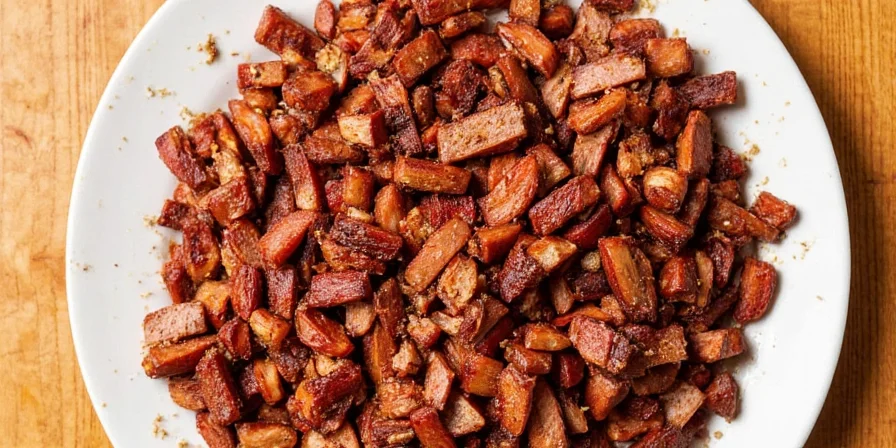
The ideal texture balances tender shreds with meaty resistance—a direct result of precise spice application and chopping technique that prevents mushiness while ensuring flavor penetration.
Why Spice Matters in Chopped BBQ
Spice creates the flavor foundation for exceptional chopped barbecue. When applied correctly, these ingredients work together to enhance meat texture, build flavorful crusts, and balance smoke. Here's what makes the difference:
- Balances smoke flavor: Smoke can sometimes create bitterness. Mustard powder and brown sugar neutralize this effect while adding complementary flavors.
- Enhances savory notes: Garlic and onion powders amplify the natural meaty flavor through umami synergy.
- Builds texture and crust: Salt draws moisture to the surface, allowing sugars to caramelize and form stable bark layers that hold seasoning.
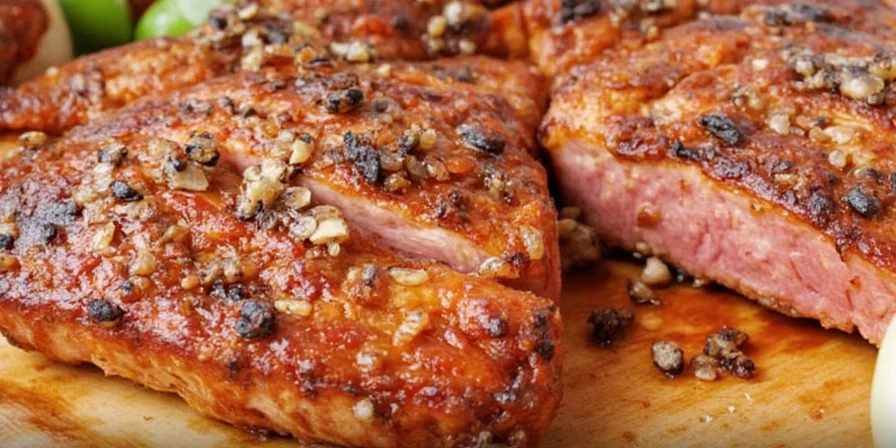
The Essential Spices for Chopped Barbecue
These six ingredients form the backbone of successful chopped barbecue seasoning. This table shows exactly how each component contributes to flavor and texture:
| Spice | Flavor Profile | Usage Tip | Why It Works |
|---|---|---|---|
| Paprika | Sweet, Smoky | Base layer for color and mild heat | Provides rich color without overwhelming heat while preserving freshness |
| Brown Sugar | Sweet, Caramelized | Helps form bark and balances heat | Adds subtle sweetness that counteracts smoke bitterness |
| Black Pepper | Pungent, Earthy | Great for kick and bite | Coarse grind preserves heat longer during smoking process |
| Garlic Powder | Umami, Savory | Boosts savory notes | Amplifies the natural meaty flavor profile |
| Onion Powder | Mildly Sweet | Adds background flavor complexity | Creates savory depth without raw onion's moisture issues |
| Cayenne | Hot, Bright | For those who want some fire | Distributes heat evenly through the meat when used sparingly |
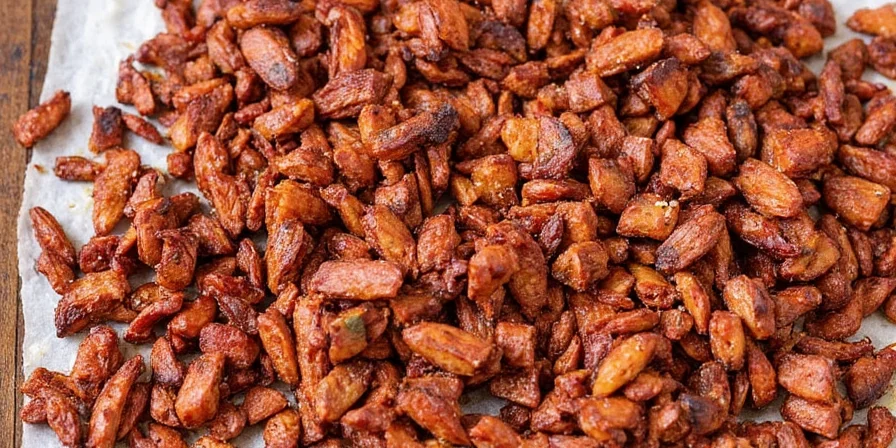
How Spices Interact with Smoked Meat
Understanding these basic interactions helps you create better chopped barbecue:
- Salt penetration: For optimal results, apply salt-based rubs 12-24 hours before smoking thick cuts to allow full penetration.
- Sugar caramelization: At 320°F (160°C), sugars create complex flavor molecules and deep red bark color.
- Spice layering: Apply different spices at different times to preserve volatile compounds like those in cayenne.
How to Blend Like a Pro: DIY Rubs & Seasonings
These three easy blends deliver restaurant-quality results for different meats:
Classic Carolina Gold Rub (Perfect for Pork Shoulder)
- 2 tbsp paprika
- 1 tbsp brown sugar
- 1 tbsp black pepper
- 1 tsp onion powder
- ½ tsp garlic powder
Apply this rub 8-12 hours before smoking. The mustard powder tenderizes meat fibers while the brown sugar balances smoke bitterness.
Texas Two-Step Heat (Ideal for Brisket)
- 3 tbsp coarse black pepper
- 2 tbsp kosher salt
- 1 tsp cayenne
- 1 tsp chili powder
Apply 4-6 hours before smoking. The coarse pepper resists vaporization during long smokes while the salt enables deep penetration.
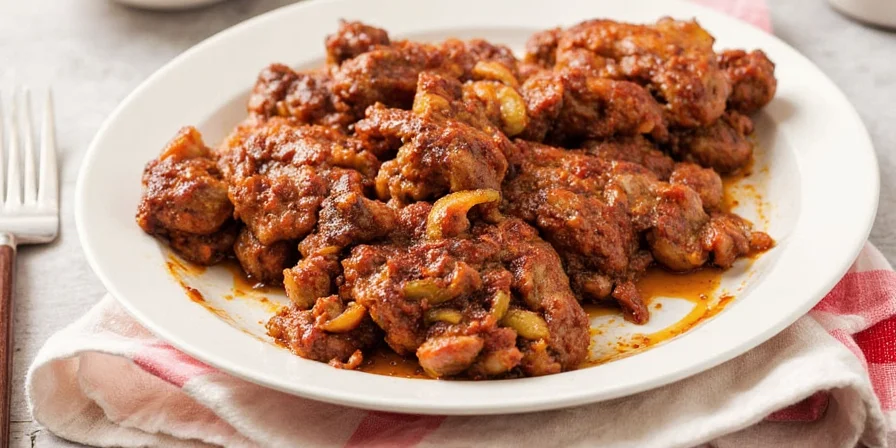
Midwest Mellow Mix (Best for Beef Ribs)
- 2 tbsp paprika
- 2 tbsp brown sugar
- 1 tbsp garlic powder
- ½ tbsp mustard powder
- 1 tsp salt
Apply overnight before smoking. The brown sugar's sweetness cuts through beef rib fat without overpowering the meat flavor.
Cooking Tips: From Brisket to Bowl
Follow these practical steps for perfect spice-infused chopped barbecue:
1. Timing Matters Most
For rubs with salt, apply 12-24 hours before smoking thick cuts like brisket. For low-salt rubs, 1-2 hours is sufficient to form surface crust without over-drying.
2. Rest Before Chopping
After smoking, rest meat 45-60 minutes. This prevents juice loss during chopping that would wash away your carefully applied spices.
3. Chop for Maximum Flavor
Use a sharp knife with alternating grain directions. This exposes more meat fibers to carry spices while maintaining structural integrity for the perfect bite.
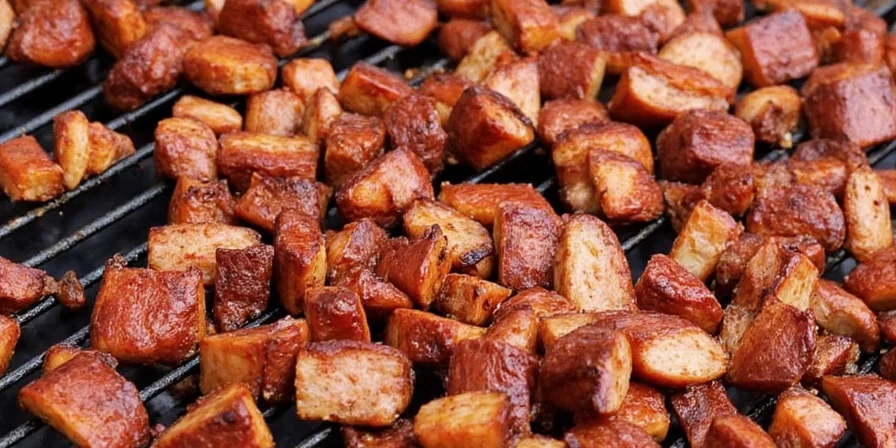
4. Rehydrate with Precision
Add pan drippings gradually while tossing meat. This keeps the spices adhered to the meat while maintaining moisture balance.
Visual Comparison Table: Spice Blends & Their Flavors
| Blend Name | Primary Flavor | Best For | Heat Level | Time to Infuse | Key Benefit |
|---|---|---|---|---|---|
| Carolina Gold | Savory + Tangy | Pork Shoulder | Low | 8–12 hrs | Tenderizes meat while balancing smoke flavor |
| Texas Two-Step | Peppery + Salty | Brisket | High | 4–6 hrs | Creates deep flavor penetration in dense muscle |
| Midwest Mellow | Sweet + Smoky | Beef Ribs | Very Low | 12+ hrs | Balances richness of fatty cuts |
FAQ: All Your Spice-Related BBQ Questions Answered
Q: Why does my bark sometimes turn out soggy?
A: Excess sugar or surface moisture prevents proper dehydration. Pat meat dry before applying rub, and avoid sugar-heavy blends for high-moisture cuts like pork shoulder.
Q: Can I use honey instead of brown sugar?
A: Honey burns faster due to fructose content. Use only 25% honey replacement in rubs and lower smoker temperature by 25°F to prevent scorching.
Q: Should I salt before or after applying rub?
A: Integrate salt directly into your spice blend. This ensures even distribution and consistent flavor penetration through osmosis.
Q: How do I fix an over-salty rub?
A: Rinse the meat surface with cold water, then apply a sugar-heavy counter-rub (3:1 sugar to salt ratio) to rebalance flavors through diffusion.
Q: Do I really need to let my rub sit overnight?
A: For salt-based rubs on thick cuts, 12-24 hours allows full penetration via diffusion. Thin cuts need only 1-2 hours to avoid over-drying.
Q: Can I reuse old rubs?
A: Never reuse spice mixes that contacted raw meat due to bacterial risk. Always keep a clean reserve portion for reapplication during smoking.
Creating perfect chopped barbecue comes down to understanding how these basic spices work together. By applying these straightforward techniques—from proper timing to strategic chopping—you'll consistently create barbecue with balanced flavors and perfect texture. Start with the Carolina Gold rub for your next pork shoulder, and you'll taste the difference immediately.
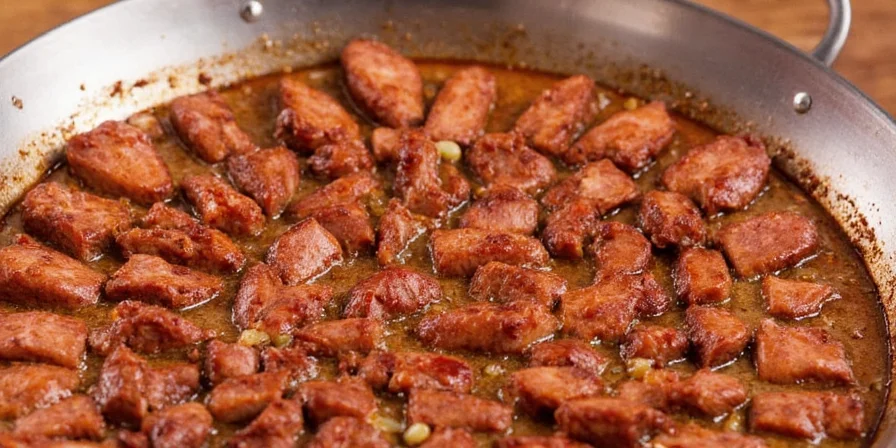
With these practical techniques, transform ordinary smoked meat into extraordinary chopped barbecue that delights with every flavorful bite.

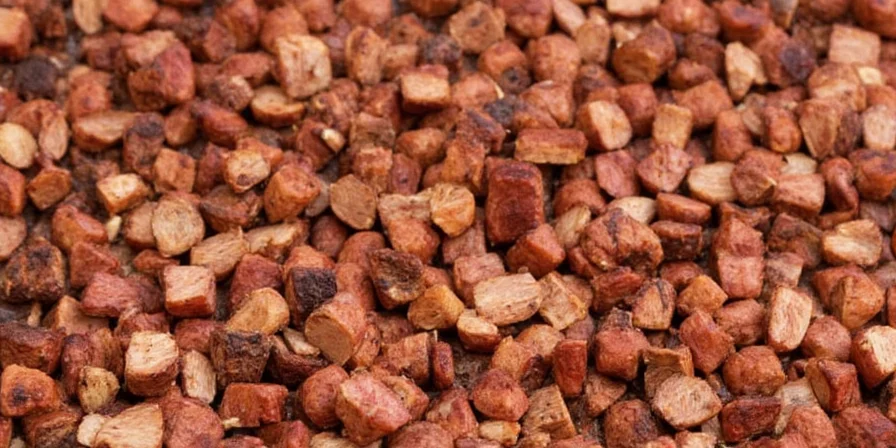









 浙公网安备
33010002000092号
浙公网安备
33010002000092号 浙B2-20120091-4
浙B2-20120091-4